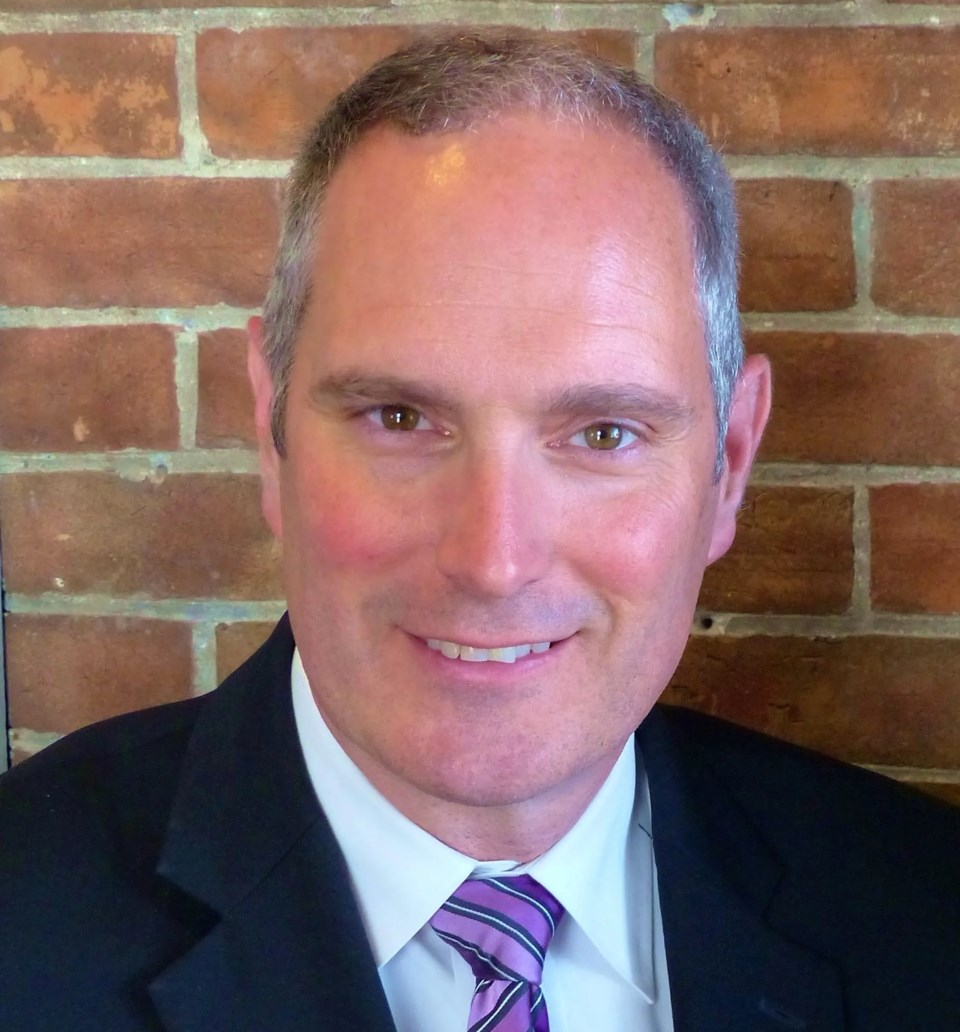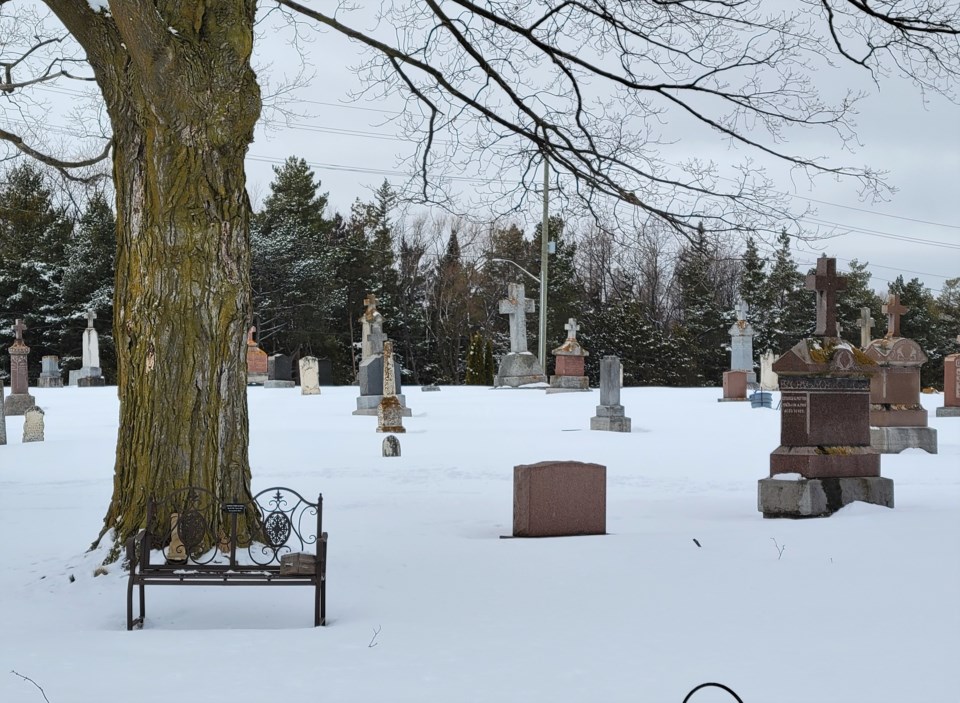It's another lively day for funeral director Shawn Davidson, who is juggling phone calls, hearing a buzz at the door and in the midst of arranging multiple funeral services.
As the director at three funeral homes: Chatterson’s Funeral Home in Collingwood and both branches of Carruthers & Davidson Funeral Home in Stayner and Wasaga Beach, Davidson has a graveside view of the rapidly changing business of death planning, including a shift in the trend of cremation.
“Cremation has also been fuelled by the general nomadic [lifestyle] of our society,” Davidson told CollingwoodToday. “It used to be that you were born, raised and die within 75 miles. Now, people have four kids and they live in four different provinces. Cremation affords mobility.”
Trends in death planning across Canada have shifted at a rapid clip over the past 15 years. According to data from the Cremation Association of North America, in 2006, 55.8 per cent of deaths in Canada resulted in cremation. That number has risen by an annual growth rate of 1.08 per cent per year and as of 2021, 74.8 per cent of deaths in Canada result in cremation.

Locally, Davidson said in a community like Wasaga Beach where many people are moving from elsewhere, his funeral home is seeing about 90 per cent cremations. Communities like Stayner, which are more rural and still have large segments of the population with deep family roots in the community, are seeing closer to 60 per cent cremations. Davidson says Collingwood falls somewhere in between.
“Initially, it was cost that fuelled the cremation trend in large urban cities,” said Davidson.
He estimates that a grave in South Georgian Bay today would cost roughly between $1,000 and $1,500, while a grave of the same size in the Greater Toronto Area could cost in excess of $22,000.
“That attitude permeates when people leave those large urban centres and move north,” he said.
Paul McCallum, a Collingwood-based consultant on funeral planning, says he's seen shifts in the industry though his work consulting with funeral home operators in Canada and the US.
“In the conversations I have, there’s a dynamic tension between convenience, costs, customization versus more traditional space or burial,” said MacCallum. “One of the fears I hear, is (people worry) they’ll get lost in history.”
McCallum estimates the typical cost of a burial in Ontario is between $5,000 and $10,000, while the cost of cremation can run between $2,000 and $5,000. The variation in costs is due to factors such as whether a person already has purchased a burial plot prior to their death, and whether they opt for more traditional funeral/visitation services or celebration-of-life services.
“(Cremation) is a less expensive option,” said McCallum, also noting that some of the shift may be due to a move away from traditional religious affiliations over the past few decades. “The landscape is changing. It’s becoming more difficult for mom-and-pop funeral homes to thrive in an environment where the cost of funerals is coming down."
McCallum says his consulting business started throughout COVID-19 due to a move toward virtual services, which he thinks will become a lasting fixture of the industry as more families are separated by geography.
Davidson also sees a shift away from traditional funeral and visitation services, and toward less formal options such as celebration-of-life gatherings.
“There certainly is a distancing from religion,” he said. “A lot of people think they can’t have a funeral because they don’t want a minister. It’s a misnomer. We have celebrants on staff that are trained in crafting meaningful ceremonies that don’t have to have any religion in it.”
Some people opt for living funerals, where someone with a terminal diagnosis may choose to be present for their own service.
“That is happening from time to time, particularly when people are selecting MAID (medical assistance in dying) as their course of death,” he said.
Options have evolved past burial and cremation to include "green burials," also called "natural burials," which involve being buried in a biodegradable casket in a burial site that would resemble a meadow or field instead of landscaped cemetery. The grave can be marked by a rock or plant, and the location is recorded, as is required by law.
“Green burials essentially bring you back to the earth in a way that is more healthy for the planet,” said McCallum.
There are two cemeteries in Collingwood, connected to each other on Raglan Street and Ron Emo Road: All Saints Anglican Cemetery and St. Mary’s Cemetery. Both cemeteries are maintained by their respective churches.
The Town of the Blue Mountains is investigating the possibility of allowing a natural burial section in the Thornbury-Clarksburg cemetery where the body is buried in a biodegradable casket or shroud, without embalming or a vault, and in a shallower grave than is traditional.
Grey Highlands is currently looking into the possibility of allowing a scattering ground, which is a designated place within a cemetery for scattering cremated ashes. Typically there is a plaque or memorial where the names of those interred in the garden are displayed.
“Scattering is something that gets a lot of press today. It’s not a difficult thing to do,” said McCallum.
Davidson says he has seen more inquiries within the last five years about green burials, with scattering becoming more commonplace locally as well.
“Scattering is becoming much more romanticized,” he said, noting the Church of the Redeemer Cemetery in Duntroon has had a scattering garden for more than 20 years.
In Ontario, you may scatter remains on private property with the consent of the land owner. You can also scatter the remains from cremation on Crown land, including land covered by water, if it is unoccupied and there are no signs or postings that prohibit scattering.
“Individual choice is becoming much more relevant,” said McCallum. “People are able to be more specific about what’s important to them and their priorities.”
Both Davidson and McCallum say that pre-planning is important, as well as making your family aware of your wishes prior to your death, even if those conversations might be difficult.
“I don’t think a lot of people think about it until they need to think about it,” said McCallum. “At minimum, you should go through the pre-planning exercise to determine what you want, how you want it and share that with your family.”
Davidson says most funeral homes will sit down with anyone at no cost to answer any questions they may have about their own plans prior to their death.
“People shouldn’t be afraid of sitting down with us. We’re not going to strong-arm them or try to talk them into things they don’t want,” he said.
Overall, when Davidson looks at the state of the funeral industry, he says he sees a troubling trend away from end-of-life services.
“Whether it’s cost, or whether people just think the impact they’ve had was inconsequential and they don’t want to burden their families – death is inconvenient for a reason,” he said. “As a society, as a family and as a community, we need a moment to mourn and to begin our grief process.”



